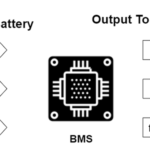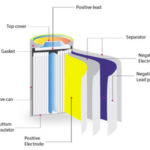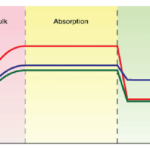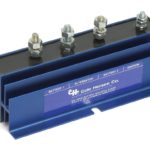 Applied Power Systems (APS) is offering its latest three-phase industrial battery charger, the SmartCharger Series intelligent multi-chemistry battery chargers. The BC6837 SmartCharger Series intelligent multi-chemistry battery chargers are designed for energy storage applications with a wide range of battery voltages and power levels.
Applied Power Systems (APS) is offering its latest three-phase industrial battery charger, the SmartCharger Series intelligent multi-chemistry battery chargers. The BC6837 SmartCharger Series intelligent multi-chemistry battery chargers are designed for energy storage applications with a wide range of battery voltages and power levels.
Features include High efficiency, high-frequency chargers; For EV, Marine, Transit, Backup, or Energy Storage Applications; Wide Power Range Available, 1 – 250kW; Rugged, Reliable, Field Proven Construction; Factory Settable for 12V, 24V, 48V, 72V & up to 480V DC Battery Output; Models available to accept AC or DC input; Built-in Diagnostics and Fault Protection; Seamless Voltage Mode to Current Mode transition; Output Current Limiting; Battery Temperature Sense Compensation; OLED display of status & parameters; Optional communication ports with PC-based Remote Monitoring software; Optional data logger;
The APS SmartCharger series of industrial battery chargers are designed for EV, transit, and stationary energy storage applications. This series of high-frequency chargers use software-defined profiles to optimize charge cycles for different battery types, programmable to support multiple battery chemistries with selectable charge profiles for most popular Lead-Acid, NiCad, NiMH, and Li-Ion battery types
The compact, high-frequency SmartChargers employ an innovative design that results in higher efficiency while providing superior performance compared to phase-controlled chargers. They are smaller, lighter, consume less power with improved input power factor, leading to reduced power consumption and increased energy cost savings.
APS SmartChargers are microprocessors controlled for fast, accurate charging of vehicle, marine, transit, or backup batteries in the deep cycle and maintenance applications. They are compact, lightweight, and easy to install. These chargers feature high-efficiency operation so they require less input power than traditional chargers while operating at peak efficiency. This allows more AC power to remain available for connected AC loads on a vessel or vehicle.
SmartChargers are available for batteries from 12V to 480V, up to 500 Amps. The modular IGBT power stage design provides scalability across a wide power range from 1 to 250kW. Standard features for the series include >90% efficiency, reverse battery protection, seamless transition from constant-current to constant-voltage mode operation, and >95% Power Factor.
SmartChargers monitor battery temperature and automatically compensate charger output based upon temperature feedback. The smart charger series provides built-in diagnostics and fault protection along with an OLED display for improved usability. Charger output voltage and current are displayed, along with operating status and fault indications.
Standard models are available to accept three-phase AC input or DC input power. Optional USB and RS485 communication ports are available to provide remote monitoring of the charger.






